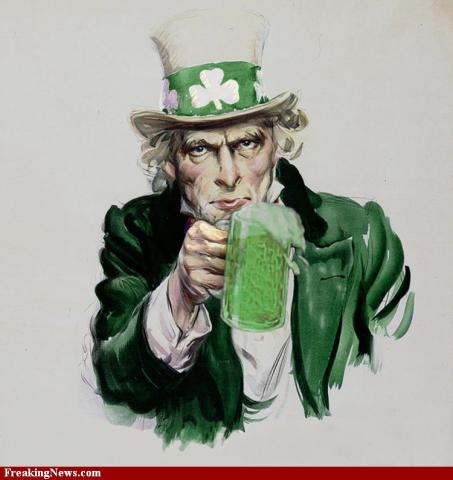History of St. Patty's Day
Gallery

St. Patrick’s Day is a holiday celebrated every year by Americans to celebrate Irish heritage and immigration. It has been commemorated for centuries, and in such has lost much of its origin, like the history of the patron Saint Patrick and the myths and lore behind it.
Saint Patrick was born in Britain in approximately 390CE to an aristocratic Christian family. They owned a townhouse, country villa and many slaves, proving their higher status (historychannel.com). This all changed abruptly, for at sixteen years of age, “He was kidnapped and sent overseas to tend sheep as a slave for seven years in the chilly, mountainous countryside of Ireland” (nationalgeographic.com). While in slavery, he grew deeper in his faith, eventually spreading the teachings of Christianity to others (nationalgeographic.com).
According to folklore, St. Patrick heard a disembodied voice in his dreams that encouraged him to escape slavery and return to his family in Britain, which he achieved with success, only to be told by the same voice to then go back to Ireland (redicecreations.com). He followed the orders, and was ordained as a bishop. After returning to the land of his captors, “His work was tough. He was constantly beaten by thugs, harassed by the Irish royalty, and admonished by his British superiors. After he died on March 17, 461 (CE), Patrick was largely forgotten” (darrahdejour.com).
The actual holiday itself did not rise in popularity until the 1970s in Ireland. The day would entail a priest acknowledging the feast day and families then getting together for a large meal. In America, it was used for incoming Irish Americans to celebrate their heritage and national identity. It has been celebrated through parades and dying the Chicago River green, effectively allowing it to be a holiday made in America (nationalgeographic.com).
Moreover, the first parades held in honor of St. Patrick’s Day were those commissioned by Irish-American soldiers in the Revolutionary War, for “Some soldiers... marched through New York City in 1762 to reconnect with their Irish roots” (nationalgeographic.com). Over the years, other parades were held in Irish immigrant communities, like Boston, Philadelphia and Chicago (nationalgeographic.com).
While the holiday has changed a lot from what it originally was, it still reflects the same spirit; showing pride in one’s culture and heritage. Also, it allows others to be Irish on the day, creating a more inclusive environment. Every year it is celebrated and nuanced, proving the adaptability of people in various environments; the capacity to flourish in another country while still retaining the roots of the original homestead, which is part of what St. Patrick’s Day is all about.
